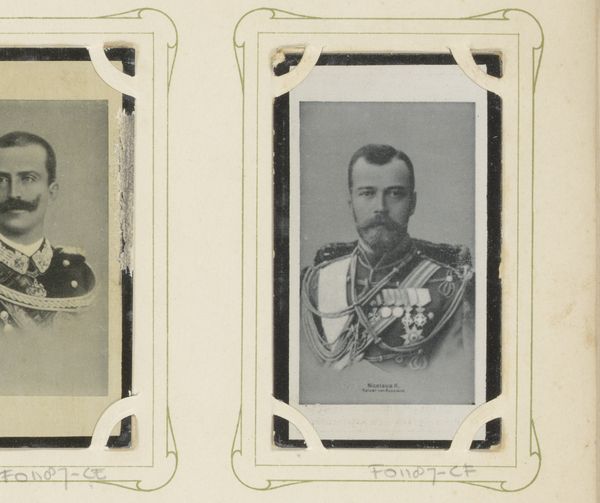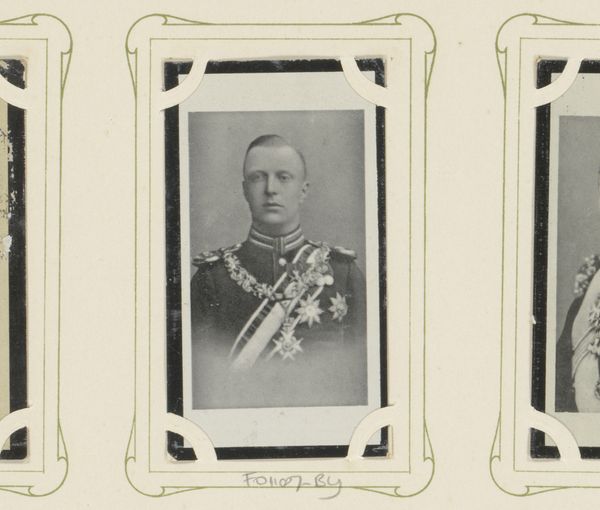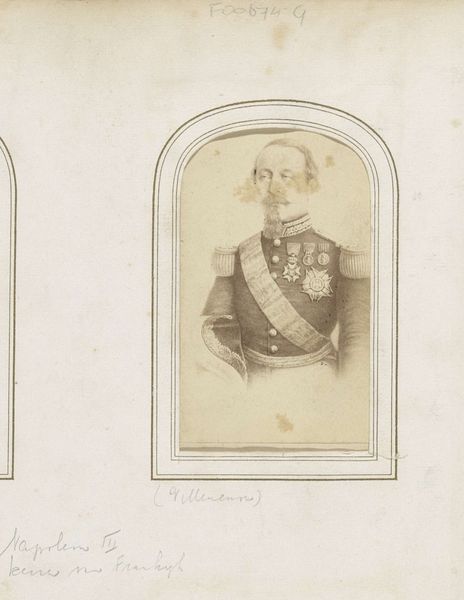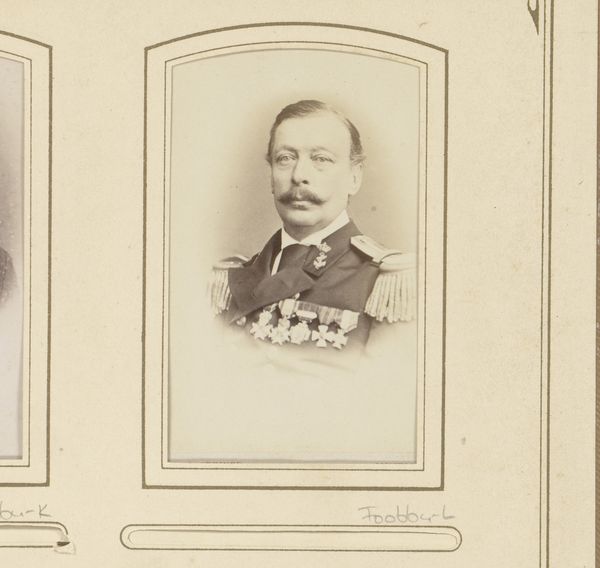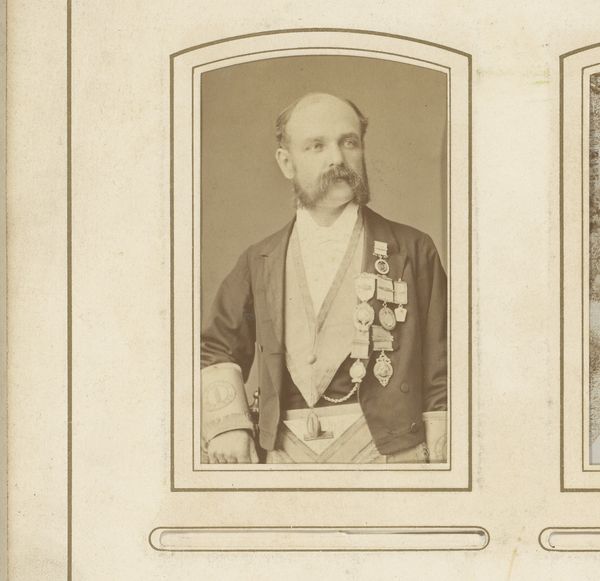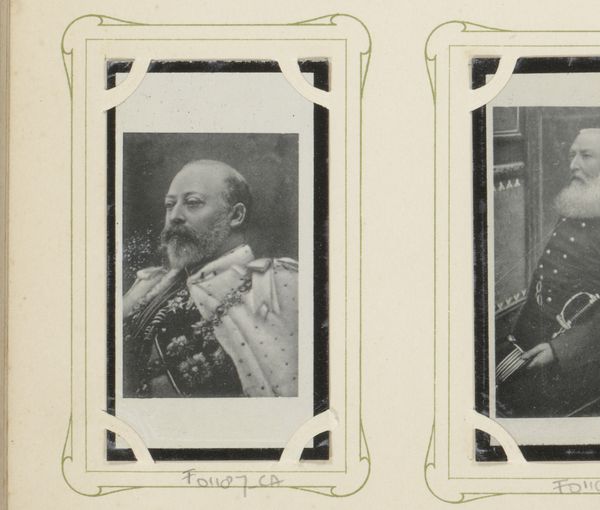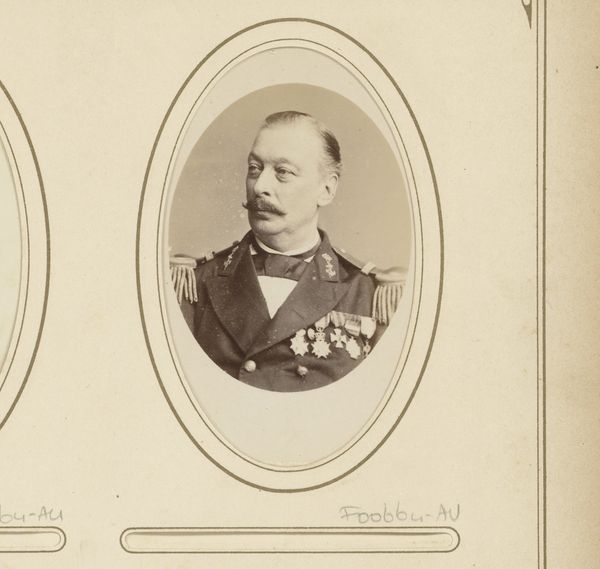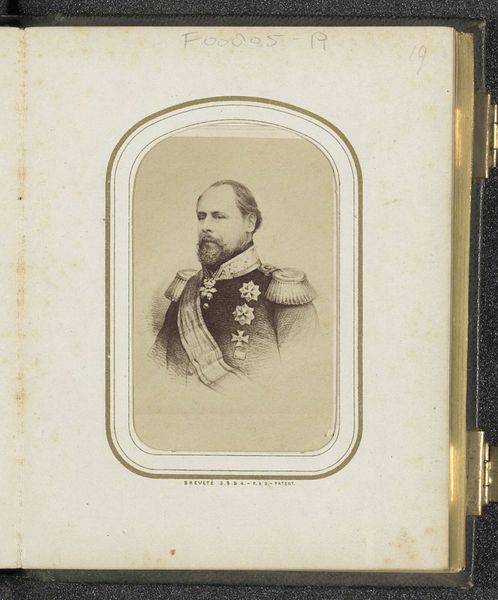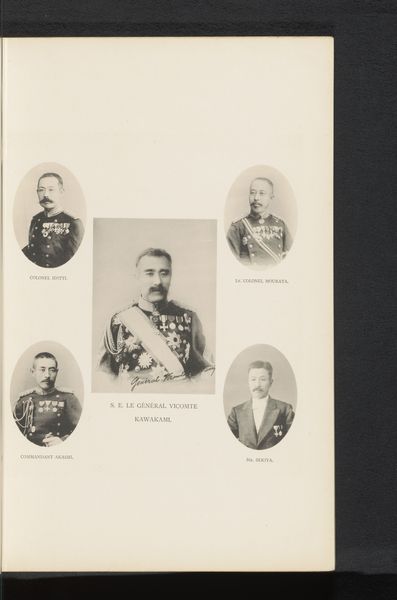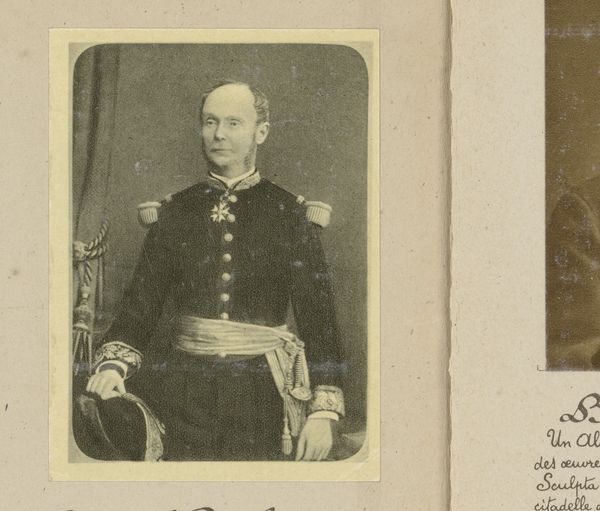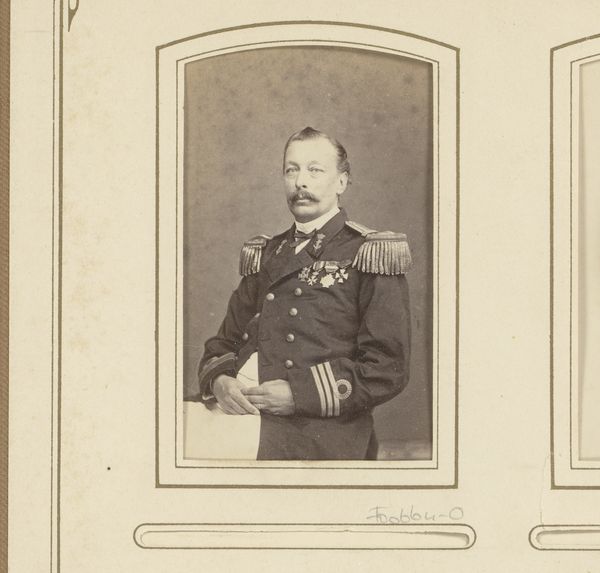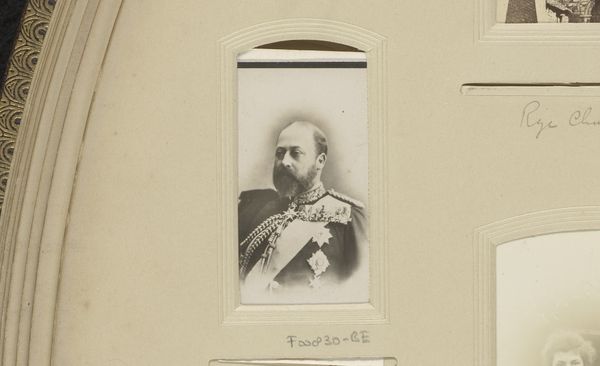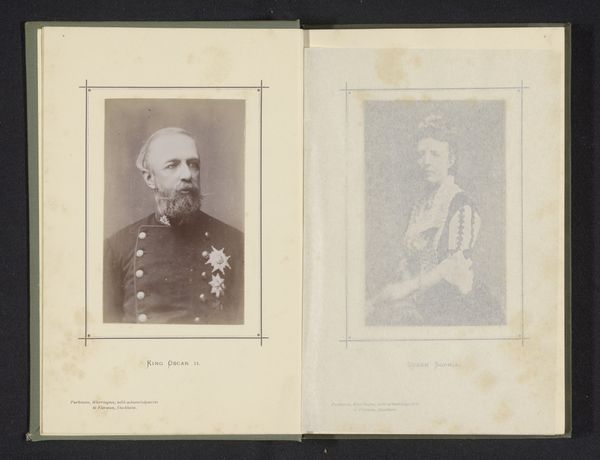
photography, gelatin-silver-print
#
portrait
#
photography
#
gelatin-silver-print
#
history-painting
#
realism
Dimensions: height 82 mm, width 45 mm
Copyright: Rijks Museum: Open Domain
Editor: Here we have a gelatin silver print from around 1905, a portrait of King Carol I of Romania. It’s…stark. There’s a clear sense of formal representation. What strikes you most about this piece? Curator: I'm drawn to the gelatin-silver print process itself. Think about the materials, the labor involved. A photographic print from this era represents a deliberate engagement with technology to propagate images of power. The question is not just "who" is portrayed, but "how" and "why" is this image produced and circulated through material means. Editor: So you see the choice of photography itself as significant? Curator: Absolutely. Consider the historical context. Photography democratized portraiture, somewhat. But access still depended on socio-economic factors. The creation of this specific object— a durable, reproducible image— was itself a political act that relies on and reinforces systems of value. What does it say about royal power at the turn of the century to be represented through mass producible methods? How accessible or manipulated could this representation be for different classes? Editor: I hadn't thought about the tension between accessibility and control in a portrait like this. I was initially just focusing on the King. Curator: The silver gelatin printing also becomes interesting. Each stage, from silver extraction, to applying it to glass plates and paper under darkroom conditions involves specific techniques and skilled craft, challenging conventional hierarchy that elevates painting above photography. It’s not just a picture; it’s a produced object deeply entwined with labor, materiality, and evolving ideas about representation. Editor: So, seeing it as a product changes how we interpret the King's image and his power. Thanks, that was helpful! Curator: My pleasure. I'm glad you have another viewpoint on how to approach materialist analyses of artworks now.
Comments
No comments
Be the first to comment and join the conversation on the ultimate creative platform.
